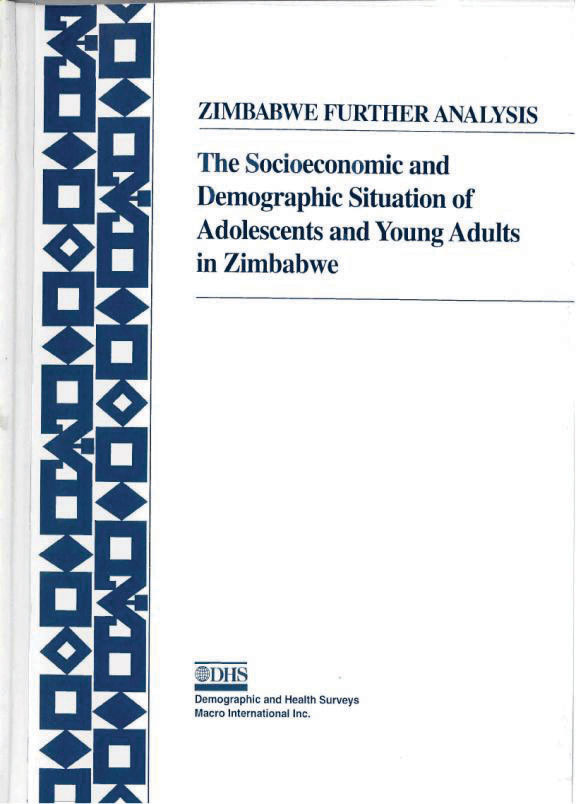- PUBLICATIONS
- JOURNAL ARTICLES
- ORDER PUBLICATIONS
Publications Summary
- Document Type
- Further Analysis
- Publication Topic(s)
- Gender, Household and Respondent Characteristics, Wealth/Socioeconomics, Youth
- Country(s)
- Zimbabwe
- Language
- English
- Recommended Citation
- Meekers, Dominique and Naomi Wekwete. 1997. The Socioeconomic and Demographic Situation of Adolescents and Young Adults in Zimbabwe. DHS Further Analysis Reports No. 23. Calverton, Maryland, USA: Macro International
- Download Citation
- RIS format / Text format / Endnote format
- Publication Date
- October 1997
- Publication ID
- FA23
Download
 The Socioeconomic and Demographic Situation of Adolescents and Young Adults in Zimbabwe (PDF, 2453K)
The Socioeconomic and Demographic Situation of Adolescents and Young Adults in Zimbabwe (PDF, 2453K)
